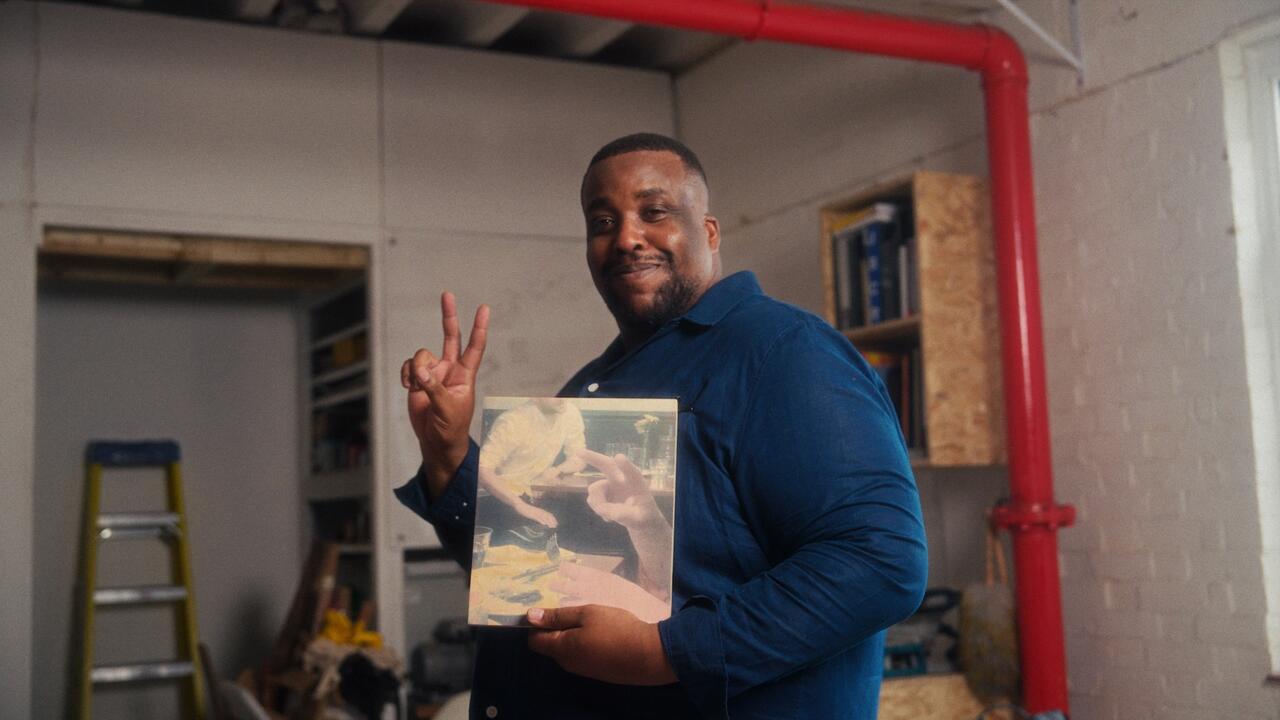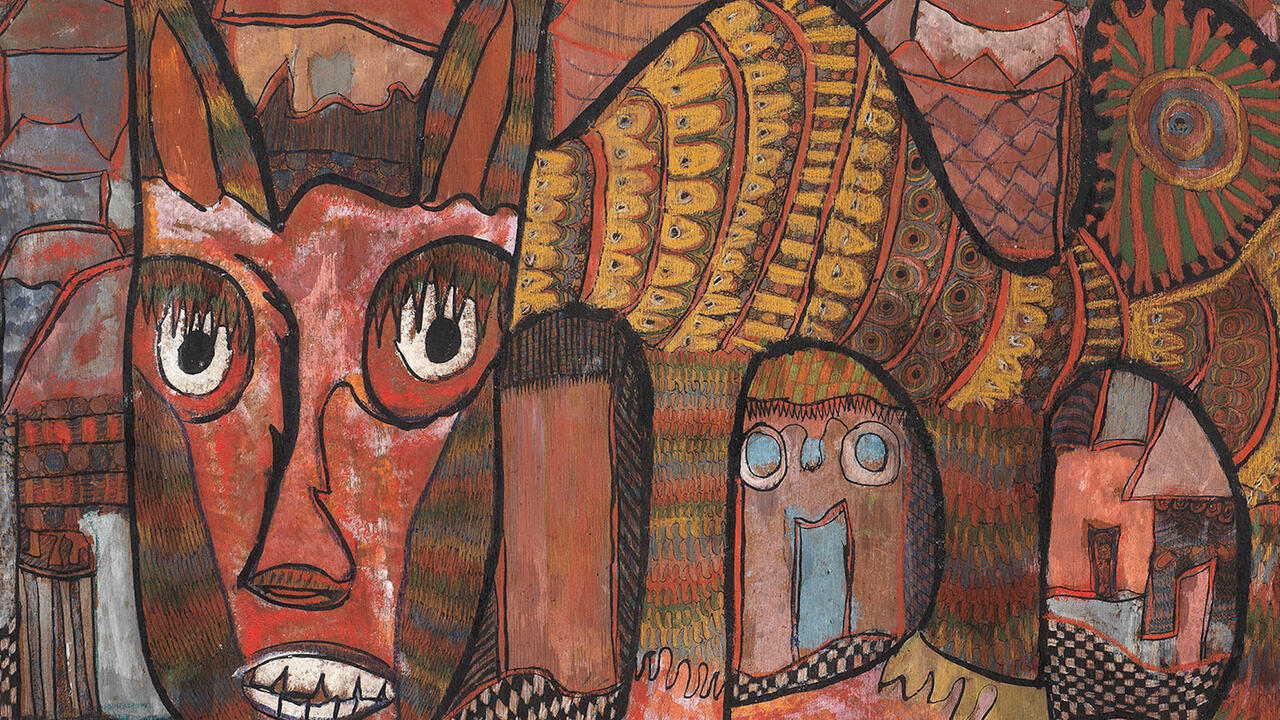Jamie Shovlin

Jamie Shovlin, like so many artists today, has a touch of archive fever. However, where many artists produce archives for archive’s sake – conforming rigorously to system and structure with little focus on the actual data included – Shovlin’s are focused chronicles, richly populated with footage, documentation and ephemera. So assiduous are his efforts, it is easy to forget that the subjects of this ‘research’ are all fabricated.
Heading into the artist’s tour of his latest show, ‘Hiker Meat’, I was anticipating a spectacular dupe. I was ready to smirk knowingly at the other gallery-goers, who might think Hiker Meat is actually a real 1981 exploitation film, as is the show’s conceit. They might also think Lustfaust, the subject of Shovlin’s last great undertaking, was actually a real glam-rock band in mid-1970s West Berlin. However, while the exhibition maintains, absolutely, its poker-faced insistence that the movie posters, shooting scripts, costumes and props are all real and original, the artist does not. Shovlin, in fact, prefaced his walk-through by explaining his disinterest in fraudulence. The whole endeavour, he explained, is to emphasize the rigidity of genre and the art of storytelling.
Hiker Meat originated as a passing mention in the Lustfaust project (2003–09), when it was briefly discussed as a film for which the band had scored a soundtrack. The Hiker Meat project then began in 2009, when Shovlin laboriously produced a feature-length video-collage, taking some 1,500 scenes from more than 400 exploitation movies. This exhibition, Shovlin’s most ambitious to date, takes place across the Cornerhouse’s three floors. First up is Hiker Meat Display (2013), comprising all manner of material concerning the production of the mythical film. Vitrines contain props and scripts, while the centrepiece is a latex headpiece of the film’s monster, a giant worm. Eight numbered text panels punctuate the space, detailing on-set politics throughout the film’s production in a museological dialect more at home in a BFI display. Panels are dedicated to three central protagonists: Jesus Rinzoli, the film’s director; Roland Marceignac, the meddling producer who put Rinzoli through hell; and Guido Van Baelen, the member of Lustfaust responsible for composing the film’s score.
On the floor above is Rough Cut (Expanded Version) (2013), a five-channel video installation. The central screen plays select scenes of Hiker Meat that Shovlin and his crew have ‘re-shot’ – the trailer, as well as opening and closing sequences. The peripheral screens alternate shots from these with production footage. It becomes very obvious how important the peripheral is to Shovlin: much of the project is a magic act of misdirection, constantly pointing the audience’s attention to the detail, so that the incongruency of the larger whole goes unnoticed.
On the top floor is Hiker Meat (Anatomy of a Film) (2009–10), scribble-covered blackboards that provide a 360-degree panorama of the thought process behind the latter parts of the project. A scene-by-scene breakdown of how Shovlin, along with his real-life collaborators – writer Mike Harte (an anagram of ‘Hiker Meat’) and composer Euan Rodger – would create his film is littered with addenda and digressions. (‘Unsure about this bit. Was thinking some kind of magical benefactor like in [the 1993 horror film] Needful Things’; ‘I wanted some hint of robot replacement/mind control.’) Outside of the circle is a stack of cube monitors, each showing a talking-head interview with a member of the real-life crew.
Both the museological presentation of Hiker Meat and Display’s Hiker Meat (Anatomy of a Film)’s psychopathic storyboarding reveal Shovlin’s meticulous and obsessive ways of working. As the audience is guided from one detail to another, one piece of behind-the-scenes trivia to the next, the finished product becomes almost entirely auxiliary, and so the deception of Shovlin’s fabrication becomes inconsequential. The posters, VHS cases, flyers and illustrations in the first space are all drafted by the artist’s own hand and the final space’s circle of blackboards has a real-time timeline that runs its full circumference. A sort of vortex appears between the second and third floors, as the work begins to fold in on itself, the latter part of the obsessive archiving and documentation becoming focused on the production of the exhibition itself, rather than the fictitious film. At some point the audience, perhaps loathe to believe it, realizes they are reading about real people.
















